Australia, often hailed as the land of the unusual and the extraordinary, boasts an astonishing array of unique mammals found nowhere else on Earth. From the iconic kangaroo to the elusive platypus, the continent’s wildlife has captured the imagination of nature enthusiasts and researchers alike. In this article, we embark on a journey to uncover the top 10 most popular Australian mammals, delving into their habitats, behaviors, and the conservation challenges they face in a rapidly changing world.
Top 10 Most Popular Australian Mammals
1. Kangaroo (Macropus spp.)
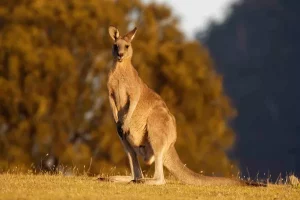
No discussion of Australian wildlife would be complete without mentioning the kangaroo, an enduring symbol of the country’s vast and diverse landscapes. Belonging to the family Macropodidae, kangaroos are marsupials characterized by their powerful hind legs and distinctive hopping gait. With several species ranging from the diminutive wallabies to the imposing red kangaroo, these iconic marsupials inhabit a variety of habitats, including grasslands, forests, and deserts. Despite facing threats such as habitat loss and vehicle collisions, kangaroos remain one of Australia’s most beloved and recognizable mammals, drawing millions of visitors to the continent each year.
2. Koala (Phascolarctos cinereus)
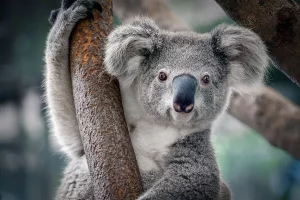
Renowned for its cuddly appearance and affinity for eucalyptus trees, the koala holds a special place in the hearts of Australians and wildlife enthusiasts worldwide. Endemic to the eucalypt forests of eastern Australia, these arboreal marsupials spend much of their time dozing in the branches, feeding primarily on eucalyptus leaves. Despite their widespread popularity, koalas face numerous threats, including habitat loss, climate change, and disease. Conservation efforts aimed at protecting and restoring koala habitat are crucial for ensuring the long-term survival of this beloved species.
3. Platypus (Ornithorhynchus anatinus)
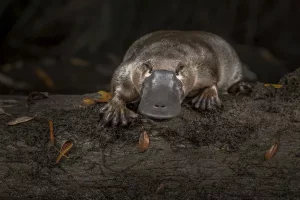
With its bizarre appearance and unique combination of features, the platypus is one of Australia’s most enigmatic mammals. Endemic to the eastern regions of the continent, this monotreme species is characterized by its duck-like bill, webbed feet, and ability to lay eggs, making it a biological marvel. Despite its iconic status, the platypus faces significant conservation challenges, including habitat degradation, pollution, and predation by introduced species. Efforts to protect and restore freshwater habitats are essential for safeguarding the future of this extraordinary mammal.
4. Wombat (Vombatus ursinus)
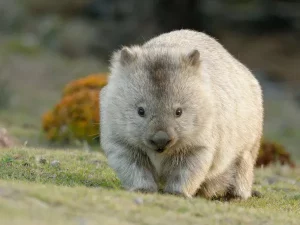
The wombat, with its sturdy build and burrowing habits, is a quintessential Australian marsupial found across much of the continent. Characterized by its short legs, powerful claws, and distinctive backward-facing pouch, the wombat is well adapted to life in a variety of habitats, including forests, grasslands, and alpine regions. Despite its somewhat solitary nature, wombats are adored by Australians for their endearing appearance and resilient spirit. However, habitat loss, vehicle collisions, and disease pose significant threats to wombat populations, highlighting the importance of conservation efforts to protect their remaining habitats.
5. Tasmanian Devil (Sarcophilus harrisii)
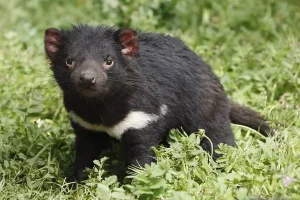
The Tasmanian devil, known for its ferocious temperament and nocturnal habits, is a carnivorous marsupial endemic to the island state of Tasmania. Characterized by its stocky build, black fur, and powerful jaws, this iconic marsupial plays a crucial role in Tasmania’s ecosystems as a top predator and scavenger. However, the Tasmanian devil faces a grim threat in the form of a contagious cancer known as devil facial tumor disease (DFTD), which has decimated populations across the island. Conservation efforts aimed at controlling the spread of DFTD and preserving genetic diversity are critical for the survival of this iconic species.
6. Quokka (Setonix brachyurus)
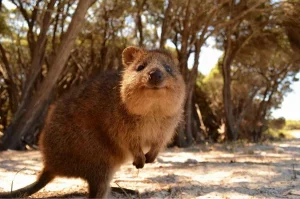
Known for its cheerful expression and friendly demeanor, the quokka is a small marsupial native to southwestern Australia, particularly Rottnest Island and nearby mainland areas. With its round body, short tail, and pouch for carrying young, the quokka has captured the hearts of people around the world, earning it the nickname “the world’s happiest animal.” Despite its endearing appearance, the quokka faces threats such as habitat loss, predation by introduced species, and human disturbance. Conservation efforts focused on protecting remaining habitat and managing introduced predators are essential for ensuring the long-term survival of this beloved marsupial.
7. Tasmanian Pademelon (Thylogale billardierii)

The Tasmanian pademelon, also known as the red-bellied pademelon, is a small marsupial found in the forests and woodlands of Tasmania and nearby islands. Resembling a miniature kangaroo, this herbivorous marsupial is characterized by its compact body, short legs, and distinctive reddish-brown fur. Despite its relatively low profile, the Tasmanian pademelon plays a vital role in forest ecosystems as a seed disperser and prey species for predators such as Tasmanian devils and birds of prey. However, habitat loss, fragmentation, and predation by introduced species pose significant threats to pademelon populations, underscoring the need for conservation efforts to protect their remaining habitats.
8. Eastern Grey Kangaroo (Macropus giganteus)
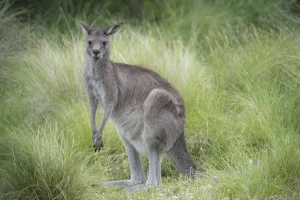
The eastern grey kangaroo, one of the largest marsupials in Australia, is widely distributed across the eastern regions of the continent, including forests, grasslands, and coastal areas. Characterized by its distinctive grey fur, powerful hind legs, and grazing habits, this iconic marsupial plays a crucial role in shaping ecosystems through its browsing and grazing activities. Despite its adaptability and widespread distribution, eastern grey kangaroos face threats such as habitat loss, vehicle collisions, and culling programs aimed at managing population densities. Conservation efforts focused on protecting habitat corridors and mitigating human-wildlife conflicts are essential for ensuring the long-term survival of this iconic species.
9. Short-beaked Echidna (Tachyglossus aculeatus)
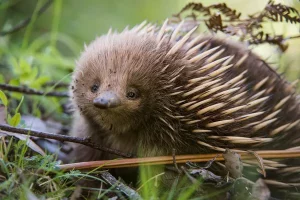
The short-beaked echidna, also known as the spiny anteater, is one of only two monotreme species found in Australia, the other being the platypus. Endemic to the continent, this egg-laying mammal is characterized by its spiny coat, long snout, and specialized tongue for feeding on ants and termites. Despite its relatively low profile, the short-beaked echidna plays a crucial role in ecosystem dynamics as a predator of invertebrates and a provider of ecosystem services through its burrowing activities. However, habitat loss, roadkill, and predation by introduced species pose significant threats to echidna populations, highlighting the importance of conservation efforts to protect their remaining habitats.
10. Northern Quoll (Dasyurus hallucatus)
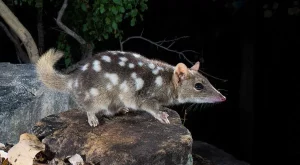
The northern quoll, a small carnivorous marsupial found in northern Australia, is known for its bold coloration, nocturnal habits, and voracious appetite. Characterized by its spotted fur, long tail, and sharp teeth, this charismatic marsupial plays a vital role in controlling insect and small mammal populations, making it an important component of northern Australia’s ecosystems. However, the northern quoll faces numerous threats, including habitat loss, predation by introduced species, and disease. Conservation efforts aimed at protecting remaining habitat and managing threats are essential for ensuring the long-term survival of this iconic marsupial.
See Also: Top 18 Fastest Airborne Animals
In conclusion, Australia’s mammals represent a diverse array of species adapted to a wide range of habitats and lifestyles. From the iconic kangaroo to the elusive platypus, these unique mammals have captured the imagination of people around the world and play crucial roles in shaping ecosystems and cultural identity. However, many Australian mammals face significant conservation challenges, including habitat loss, climate change, and invasive species, underscoring the need for concerted efforts to protect and preserve these iconic species for future generations.
You Might Be Interested In:


























